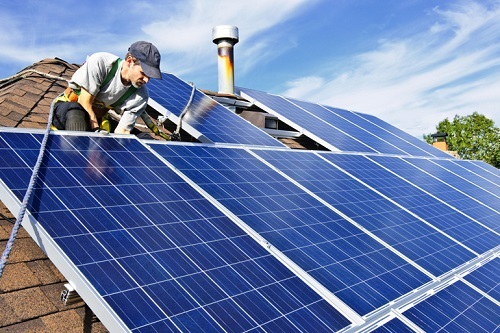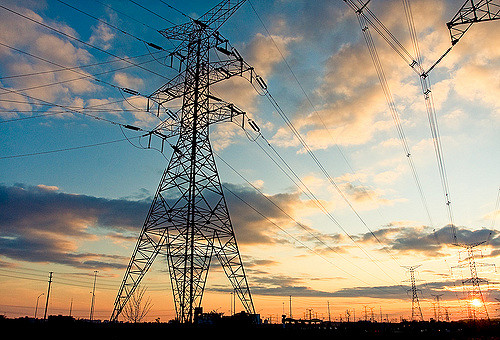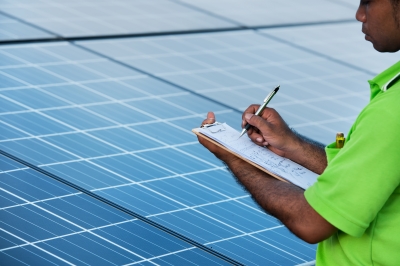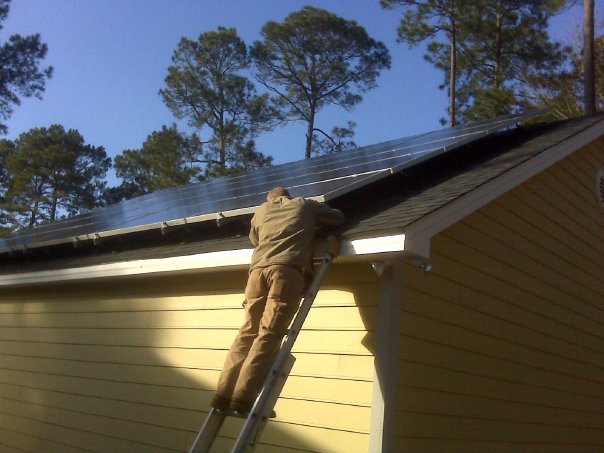
You’ve been reading the news – you’ve noticed your home energy bill rising – and you know the damage we are doing to our environment. But, you’ve also been reading up on ways to conserve. You’ve heard of solar panels, their benefits, their costs, and their return on investment. Now, you’re interested in possibly having a solar electric system installed in your own home. What’s involved in the installation process? Read on below to find out.
How Many and What Type of Solar Panels Will You Need?
This depends on a variety of factors, including the space you have, where you live, and how much money you have to spend on solar panels. Some solar panels are much more efficient, but much more costly. Some less efficient types of solar panels are more affordable, but will require you to buy more solar panels to compensate for their lags in efficiency. Maybe you live in an area that doesn’t have much sun (e.g., Seattle, Chicago). Maybe you live in an area that enjoys plentiful sun (e.g., California, Arizona). These are all factors you’ll need to consider when choosing the correct solar panels and determining which is the right type of system for your residential needs.

There are three main types of solar panels: monocrystalline silicon solar panels, polycrystalline silicon solar panels, and thin-film solar cells. They are listed in decreasing order from efficiency of the panels and cost. Monocrystalline silicon solar panels are your most efficient panels, but they come with a more hefty price tag than thin-film solar cells. Thin-film solar cells are great if you have a lot of space, because they cost less, but you’ll need to install more of them to get the same benefits and return on energy. But, most homeowners don’t have the space required for these types of solar cells. Everything’s a tradeoff, and you’ll be ahead of the game by researching the pros and cons of each type before calling an installer to figure out which system is the best for your needs.
Beginning the Installation Process
Let’s flash forward and assume you’ve done the research, have contacted a reputable solar installer, and are ready for installation. What’s involved? And how soon will you start to notice your return on investment?

Let’s start by talking about what really happens when you install solar panels in your home, and how they convert sunlight into energy. First, solar panels convert sunlight to DC current. An inverter (part of your solar power system that converts stored energy into voltage needed to run standard electrical equipment) converts this DC electricity to AC. Your home takes the energy it needs based on the number of electrical units requiring energy. If your residential solar system is also connected to the grid, any extra , unused electricity, is fed back to the grid (or to a battery, if you have a battery backup). In cases like this, you are typically eligible for something called net metering. This is essentially a credit that is given to your energy account from the utility company. When you draw energy from the grid (because you no longer have enough solar energy to consume), net metering compensates for the amount of energy you gave the grid. In essence, it’s possible to come out with a zero balance because what you put into the grid (from your solar panels) is roughly the same amount that you took from the grid (e.g., during nighttime).

In some extremely rural places, with limited or no grid availability, you may install home solar systems that are not connected to the grid. Your sunlight conversion is the same; however, you won’t have the option of connection to the grid when you run out of solar energy. This type of solar electrical system requires considerable monitoring of your energy use to make sure you have enough energy to get you through the day.
Before anything is installed, a solar engineer will come to your home and assess your home for the proper type of installation – asking you and consulting on the following things:
* How much sun will you have
* Where will the system be placed (on the roof, on the ground)
* How big will the system need to be to satisfy your energy needs
* Will you be connected to the grid or not connected to the grid
* How can you optimize the safety and functionality of the system once installed
Once you have gone over these things, and the solar engineer has recommended the best solar system for your residential needs, the solar panel installation process can begin.
Installing Solar Panels
When it comes to solar panel installation, hiring a professional is the best route. These individuals are well-versed in solar energy, know the ins and outs of installation, can maximize your return on investment by installing and positioning the panels correctly, and can give the system a once-over to make sure everything is safe for use.

There are some things you’ll need to consider prior to choosing a solar installer. Here are the most important things to consider:
* How much experience does the installer have installing solar panels?
* Are you dealing with a licensed and reputable solar installer?
* Have you contacted your state electrical board to determine if the solar company you are dealing with has any pending or active judgments or liens against it?
* Have you gotten multiple bids for the project?
Once you have done all your homework, done your due diligence, and chosen a contractor, it’s time to get started!
The entire installation process averages about two days. But, that doesn’t mean once you’ve decided on what type of system you want installed, they’ll be up and running by the end of the week. The installation process can be long and drawn out, because of the number of contracts that are involved. Once you’ve chosen your system, and if you’ll be connecting to the grid (as the overwhelming majority of homeowners with residential solar systems do), you’ll have to sign contract upon contract. One with the installer. Another with the electrical company. But, it doesn’t stop there. Once you sign your contract with the electric company, they’ll need to approve it, because you will be tying into their grid. The electric company will have a number of hoops that your system will need to pass through, including the efficiency of the system and the safety of the connections. Because we’re dealing with electricity, any malfunction or safety issue can be a huge pickle for the utility company and its equipment.

What other types of consultation will you need to have? If you’re installing solar panels on your roof, a roofing contractor will need to come out to determine if your roof can bear the weight of the solar panels. These types of “hang-ups” with the contractors can take weeks for approval. Then, you’ll need to work yourself into the installation schedule of the solar installers. So, what seems to be a simple two day process, could in fact, take a couple of months when it’s all said and done. What’s the payback? The money you’ll be saving on your first energy bill. And the financial incentives you get to take advantage of by going green and reducing your carbon footprint!
Maintenance, Repair, and Cost
Like with any type of system, you’ll need to maintain it, and at times, repair it. These repairs could come from malfunctioning parts, or ones that are just worn out and need replacing. Like your car, as long as you get it oiled and tuned every few thousand miles, you’ll enjoy many years of energy cost savings from your installed solar energy system.

How long can you expect your solar system to last? The majority of residential solar panel systems last for 25+ years. So, when you’re considering the hefty price tag of these systems, try to think of the energy cost savings of that long of a period. In the United States, most homes consume about 1 kW of electricity per hour, with the average utility bill nationwide, averaging at $0.10 for a kWh of electricity. Conservatively speaking, you can generate about 10 watts of solar energy/square foot. Electrically-speaking, you’ll need about 100 sq. ft. of solar panels for every kW you generate. The nationwide average cost for solar panels is $7 to $9 per watt. For the average size home, in a state with average sunlight, a 5 kW installed solar panel system will cost you about $25,000 to $35,000. I know that seems like a lot. But, you want to know the good news. The price of solar panels are dropping considerably year over year. In fact, in the next year or so, it’ll be feasible that you can purchase a system at $1 to $2 a watt (the solar companies are starting to get very aggressive with price drops to increase the number of people buying their systems). If we go off that scenario, a 5kW system could only cost you $10,000, with a 10-year payback. And considering the life of the system is at 25+ years, you’ll benefit from a huge return on investment.
In Conclusion
It’s a lot to think about, it’s a lot to research, and it’s a lot of money. But, it’s also a huge benefit to your wallet and a huge benefit to the environment. At the rate the use of solar energy is expanding, it’s a great bandwagon to be on. Once you get through the upfront, and you get through your payback period, you’re generating pure profit from your installed solar system. In the long run, what’s a few months of headache dealing with utility, solar, and roofing contractors, when you consider the benefits waiting for you over the next 25+ years.

